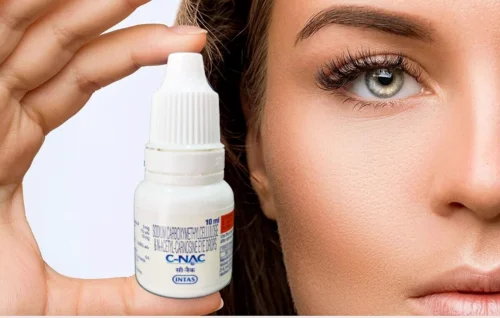What Online Sources Claim: The Story of Claristan Eye Drops Wayne Rowland
Several blog and promotional pages mention Claristan Eye Drops Wayne Rowland as a product for alleviating common eye issues. For example:
- A blog named “FACWE” publishes an article titled “Claristan Eye Drops Wayne Rowland for Clear Eye Relief”, describing them as an over-the-counter solution for redness, itching, irritation from allergies, pollution, or screen use.
- Another site describes that the drops contain ketotifen, an antihistamine and mast cell stabilizer, and claims the product offers dual action (both immediate relief and prevention).
- The promotional pages emphasize marketing language: “trusted option,” “fast relief,” “safe for daily use,” etc
However:
- None of these pages cite peer-reviewed studies, medical institutions, or regulatory approvals.
- There is no mention on major ophthalmology or pharmaceutical sites of “Claristan Eye Drops” or “Wayne Rowland” in relation to eye medications.
- The name “Wayne Rowland” appears in unrelated contexts (e.g. a website’s Q&A page uses that name in a different domain) but not in credible medical contexts.
Thus, while there are online mentions, they appear promotional and not medically substantiated.
What the Claimed Ingredients & Mechanism Suggest (Based on What Is Said)
From the promotional claims, here’s what might be in the formulation, and how those kinds of ingredients usually work:
Ketotifen & antihistamines
- The blogs mention ketotifen as a primary component, claiming it functions as both antihistamine (blocking histamine receptors) and mast cell stabilizer.
- In conventional ophthalmology, ketotifen eye drops are used for allergic conjunctivitis, to relieve itching and reduce allergic inflammation.
- Its dual role (blocking existing histamine effects and preventing further release) is plausible, although efficacy, concentration, and formulation matter greatly.
Other supporting ingredients
- The promotional pages also speak of anti-inflammatory properties, soothing agents, and possibly lubricants or preservatives (common in eye drops).
- Because the sites do not provide full ingredient lists, we can’t verify the presence or concentration of such components.
If Claristan indeed contains ketotifen or similar compounds, its mechanism would align broadly with known allergy eye drop mechanisms.
Potential Benefits & Limitations — What Claims Might Be True, but with Caveats
Possible benefits (if formulation is adequate)
- Relief of itching, redness, watering associated with allergic eye reactions
- Dual action: immediate relief plus prophylactic effect (if mast cell stabilization is adequate)
- Convenience if over-the-counter and easy to apply
- Support for eye comfort during screen use, dust exposure, or other irritants
These potential benefits echo what standard antihistamine eye drops aim to do.
Major limitations & uncertainties
- Unknown dosing / concentration: effectiveness depends heavily on strength (e.g., 0.025% ketotifen vs lower doses)
- Lack of clinical trials: no verifiable published trials confirming efficacy or safety for this specific product
- Unknown long-term safety: frequent use, preservatives, interactions, or side effects not documented
- Non-regulation or lack of approval: this product is not found in reputable regulatory databases (e.g., FDA, EMA)
- Placebo / bias risk: promotional pages often overstate effects without controls or comparative data
Thus, while benefits are plausible, they must be viewed skeptically without independent validation.
Safety, Risks & How to Proceed Carefully
Whenever considering an eye drop—especially one not yet documented in reliable medical sources—exercise caution. Key safety issues include:
Allergies or sensitivities
- Eye drops often contain preservatives (e.g. benzalkonium chloride) which can irritate sensitive eyes
- Individuals may develop allergic responses to the formula itself
Contamination & sterility
- Eye drop bottles must be sterile; if manufacturing or handling is subpar, risk of infection increases
- Shared bottles or touching nozzles to the eye can introduce pathogens
Drug interactions & comorbidities
- If a person uses other eye medications (e.g. glaucoma drops, steroids), there may be interactions
- In conditions like glaucoma, dry eye, or ocular surface disease, additional effects need caution
Mislabeling, adulteration, or false claims
- In products without regulatory oversight, mislabeling or undisclosed ingredients is a serious risk
- Some eye drops sold online may contain harmful or off-label substances
Overuse / misuse
- Excessive use may damage ocular surface or induce rebound effects
- Using drops intended for allergy relief to treat non-allergic eye issues (e.g. infection) may delay proper treatment
Pediatric, pregnancy, or special populations
Use in children, during pregnancy, or among people with systemic disease should only occur with professional guidance
Given these risks, before using any new eye drop, especially one with limited documentation, one should consult an ophthalmologist or qualified eye care professional.
How It Compares to Established Eye Drop Products
To better contextualize Claristan, here is how it would compare (in description) to more established, documented eye drops:
| Feature | Claristan (claimed) | Established / validated eye drops |
|---|---|---|
| Active ingredient | Claimed ketotifen + anti-inflammatory | Known antihistamines (ketotifen, olopatadine), mast cell stabilizers |
| Evidence base | Promotional sites, no peer-review | Multiple clinical trials, regulatory review |
| Safety record | Unknown | Documented side effects, contraindications |
| Regulation / approval | Unknown | FDA / EMA / local approvals and labeling |
| Usage guidance | From blogs, not medical sources | Clear instructions, prescribing info |
| Reliability | High uncertainty, promotional bias | High confidence when used appropriately |
In other words, while Claristan’s claims superficially align with known mechanisms of allergy eye drops, it lacks the validation, oversight, and transparency of established pharmaceutical products.
How to Evaluate & Decide Whether to Trust a Product Like Claristan
Here are guidelines for evaluating any eye drop like the claimed “Claristan Eye Drops Wayne Rowland”:
1. Ingredient transparency
Check whether the manufacturer lists a full ingredient list, concentrations, and potential preservatives.
2. Regulatory / licensing status
Search whether the product is approved in recognized medical regulatory bodies (FDA, EMA, local health authorities).
3. Clinical evidence
Look for published studies, clinical trials, or independent reviews in medical journals.
4. Manufacturer / brand reputation
Is the brand or developer known? Do they have credible background in pharmaceutics or ophthalmology?
5. Packaging, labeling & safety
Credible products have batch numbers, expiration dates, sterilization covers, tamper seals, and quality control notes.
6. Independent reviews & expert opinions
Check whether ophthalmologists, optometrists, or trusted medical websites mention the product.
7. Start cautiously
If considering trial use, try only one eye first (as a test), monitor for adverse reactions, and discontinue if irritation occurs.
8. Consult a professional
Before adopting any new eye remedy, especially for ongoing use, consult an eye care specialist.
Conclusion: A Cautious Summary
While Claristan Eye Drops Wayne Rowland is mentioned in a few blogs and promotional pages, there is no credible medical or regulatory evidence to support that it is a verified, safe, and effective product. The claims align with what known antihistamine eye drops do, but missing data (ingredients, trials, oversight) make it uncertain and risky.
Anyone considering using such a drop should approach with skepticism, demand transparency, and consult an eye care professional. Before trusting unverified products, rely on well-documented and approved ophthalmic formulations with known safety and effectiveness.








